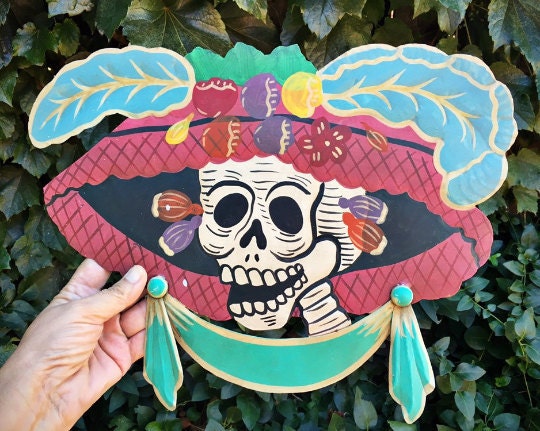Día de los Muertos, or Day of the Dead, is a Mexican and Central American holiday celebrated on November 2nd to commemorate loved ones who have died. The ritual intertwines with two Spanish holidays: All Saints Day on November 1st, to remember the children, and All Souls Day on November 2nd to honor the adults. Day of the Dead is about celebrating--not mourning--the lives of the dearly departed and draws from the cycle of agriculture. Crops come to life from the ground where the last ones lie buried. Life emerges from death.
Day of the Dead is celebrated in Mexico, Central America, and in the United States in locations with large Mexican and Mexican-American populations such as California, Arizona, Nevada, and my own New Mexico. This is one of my favorite holidays as it is among the vibrant, filled with music, dance, and food.
One popular dance is La Danza de los Viejitos, or the Dance of the Old Men, in which boys and young men dress as old men, walk around crouched over then suddenly jump up in an energetic dance.
Pan de muerto, or bread of the dead, is typical fare. It's the traditional Pan Dulce or sweet bread, spiced with anise seads and decorated with bones and skulls arranged in a circle, signifying the circle of life, plus tiny dough teardrops of sorrow.
The ofrenda, or altar, is another symbol of Day of the Dead. For me this is perhaps the most moving, as it honors our loved ones and offers them favorite treats. My friend called yesterday; she's having a Day of the Dead party and has begun planning her ofrenda. She wanted to know what my father loved to eat, as he will be part of her altar. I told her his favorite food was a blue cornmeal sweet dish called atole, which he grew up on, prepared by his Native American grandmother.
On my altar, I will have photos of my beloved family members who have died recently and not-so recently: my sister-in-law, my dad, my husband's mother, and my grandparents. I will place mementos that remind me of them and offerings that might please them or perhaps help on their journey in the afterlife.
It's said that every ofrenda should include four elements of life: water, wind, earth, and fire. Water is left in a pitcher so spirits may slake their thirst. Papel picado, or traditional paper banners, represent wind. Food is earth, and especially the pan de muerto. Candles left in the form of a cross represent the cardinal directions so spirits can find their way.
Day of the Dead is not only beautiful in what represents, but it is often filled with beautiful imagery in the form of flowers, butterflies, and decorated calaveras. The marigold, native to Mexico, is placed on the ofrenda and around graves to represent the path for spirits from the cemetery to their families' homes. Monarch butterflies are believed to embrace the spirits of the departed. Calaveritas de azucár, or sugar skulls, along with toys are left on the altars for the souls of children. The skull is not a morbid symbol but rather a whimsical reminder of the cycle of life, which includes death.
If you find yourself missing a beloved departed friend or family member at this time, which is normal when days become shorter, you may want to create an ofrenda. It can even be a candle and photograph by your computer or on your mantle. It's a wonderful way to honor someone, and let them know that you're thinking of them. Yes, I would give anything for my family members to be here with me, and by celebrating them in this way, I do have them back with me, in spirit and through the love I have for them and they for me.

